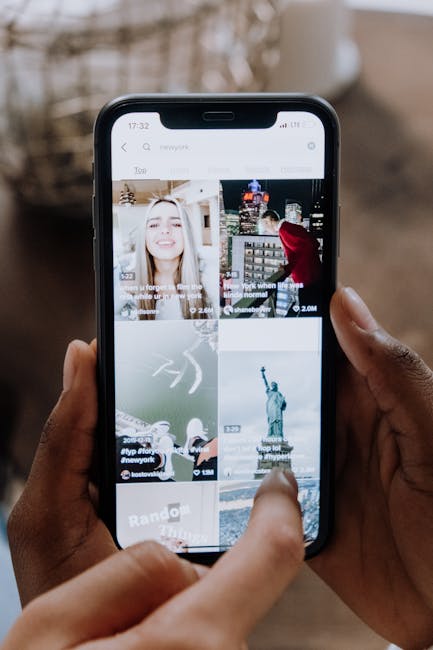The “Link in Bio” tool has become an essential feature for event promotion across social media platforms, especially in the United States. This tool allows event organizers to share a single link that leads to a centralized hub of information about their event, making it easier for potential attendees to learn more and get involved.
What is a Link in Bio Tool?
A “Link in Bio” tool is a feature that enables users to add a clickable link to their social media bio, directing followers to a specific webpage, event page, or other online content. This tool is particularly useful for event promotion, as it provides a simple and effective way to drive traffic to a central hub of information.
Benefits of Using a Link in Bio Tool for Event Promotion
There are several benefits to using a “Link in Bio” tool for event promotion:
- Increased conversions: By providing a direct link to event information, potential attendees are more likely to click and learn more.
- Streamlined communication: A single link can be used across multiple social media platforms, reducing confusion and making it easier for attendees to find event information.
- Improved analytics: With a centralized link, event organizers can track clicks and engagement, providing valuable insights into the effectiveness of their promotional efforts.
Best Practices for Using a Link in Bio Tool
To get the most out of a “Link in Bio” tool, event organizers should follow these best practices:
- Use a clear and concise link: Make sure the link is easy to remember and type, and that it directs users to a relevant and informative page.
- Promote the link: Share the link across social media platforms, email marketing campaigns, and other promotional channels.
- Track and analyze performance: Use analytics tools to monitor clicks and engagement, and adjust promotional strategies accordingly.
Popular Link in Bio Tools for Event Promotion
Some popular “Link in Bio” tools for event promotion include:
- Linktree: A popular platform for creating a centralized hub of links and information.
- Bio.fm: A tool that allows users to create a customizable link page.
- AllMyLinks: A platform that enables users to create a single link that directs to multiple online destinations.
Examples of Successful Event Promotion with a Link in Bio Tool
Several events in the USA have successfully used “Link in Bio” tools to drive attendance and engagement. For example:
The Coachella Valley Music and Arts Festival uses a “Link in Bio” tool to promote their event and drive traffic to their website. By sharing a single link across social media platforms, the festival organizers can provide attendees with easy access to information on tickets, lineup, and accommodations.
The New York City Marathon uses a similar approach, sharing a link in their social media bios that directs users to a central hub of information on the event, including registration details and course maps.
The “Link in Bio” tool has become an essential feature for event promotion in the USA. By providing a simple and effective way to drive traffic to a central hub of information, event organizers can increase conversions, streamline communication, and improve analytics. By following best practices and using popular “Link in Bio” tools, event organizers can successfully promote their events and drive attendance.
Tips for Creating an Effective Link in Bio Page
When creating a link in bio page, there are several key elements to consider. Here are some tips to help you get started:
- Keep it simple and concise: Make sure your link in bio page is easy to navigate and understand. Use clear headings and concise language to communicate the essential information about your event.
- Use eye-catching visuals: Incorporate high-quality images or videos that showcase the excitement and energy of your event. This will help grab the attention of potential attendees and encourage them to learn more.
- Make it mobile-friendly: Ensure that your link in bio page is optimized for mobile devices, as this is likely to be the primary way that people will access it.
- Include a clear call-to-action: Use a prominent button or link to encourage visitors to take a specific action, such as buying tickets or learning more about the event.
Measuring the Success of Your Link in Bio Campaign
To determine the effectiveness of your link in bio campaign, you’ll need to track key metrics such as:
- Click-through rate (CTR): This measures the number of people who click on your link in bio compared to the number of people who view it.
- Conversion rate: This measures the number of people who take a desired action, such as buying tickets or signing up for a newsletter.
- Engagement metrics: These include likes, shares, and comments on your social media posts, which can help indicate the level of interest in your event.
Examples of Events That Have Successfully Used Link in Bio Tools
Several high-profile events in the USA have successfully used link in bio tools to drive attendance and engagement. For example:
The South by Southwest (SXSW) festival in Austin, Texas, uses a link in bio tool to promote their event and drive traffic to their website. By sharing a single link across social media platforms, the festival organizers can provide attendees with easy access to information on tickets, lineup, and accommodations.
The Macy’s Thanksgiving Day Parade uses a similar approach, sharing a link in their social media bios that directs users to a central hub of information on the event, including viewing schedules and parade route information.
Common Mistakes to Avoid When Using Link in Bio Tools
While link in bio tools can be an effective way to promote events, there are several common mistakes to avoid:
- Not updating the link regularly: Make sure to update your link in bio page regularly to reflect changes in your event schedule, lineup, or other important details;
- Not making it mobile-friendly: Ensure that your link in bio page is optimized for mobile devices, as this is likely to be the primary way that people will access it.
- Not tracking analytics: Use analytics tools to monitor the performance of your link in bio campaign and make adjustments as needed.
By using a link in bio tool, event organizers in the USA can create a centralized hub of information about their event, making it easier for potential attendees to learn more and get involved. By following best practices, measuring success, and avoiding common mistakes, you can use a link in bio tool to drive attendance and engagement for your event.






I was not aware of the various benefits of using a “Link in Bio” tool for event promotion. This article has given me valuable insights and I will definitely consider using it for my future events.
The article provides a comprehensive overview of the benefits and best practices of using a “Link in Bio” tool for event promotion. I appreciate the clear explanations and examples provided.
The article could have included more examples of popular “Link in Bio” tools and their features. Nevertheless, it provides a good introduction to the concept and its applications in event promotion.